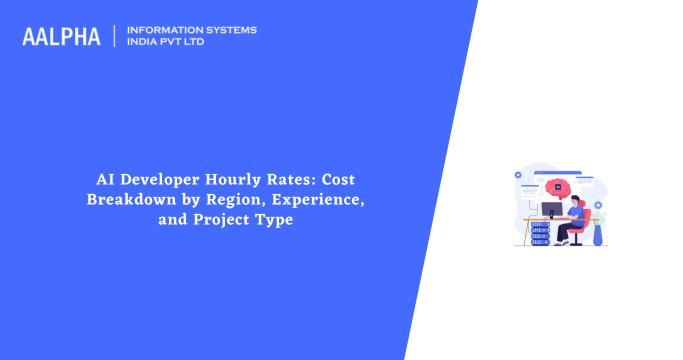With the increased need for productivity and work efficiency, most companies and organizations are at the brim of implementing project management systems. Since most organizations will have different functions and duties, it is always essential to center different operations under a project management system that will help manage different operations and projects in departmental areas. As an organization, you will also enjoy the timely completion of projects, achieving expected budgets, with the quality of projects notwithstanding. You can also enjoy better standards through such a system, which centers its operation on planning, monitoring, and even monitoring projects. Let’s dive into a deeper understanding of a project management system.
Understanding a project management system
The procedure and standards followed to finish a project are referred to as a project management system, as are the technological tools used for planning, organizing, and overseeing the project. These tools encompass standard software programs. Utilizing a project management system for activities, including setting budgets, dedicating resources, monitoring risks, limiting modifications, and exchanging data and updates, is possible.
Reasons why you should go for a project management system
-
Time management
An essential criterion for assessing a project manager’s performance is their ability to meet timelines. Systems for project management assist you in maintaining your project’s timeline. A project management system may assist you in monitoring development, identifying areas where things are going off schedule upfront so that you can make the modifications you require to accomplish your goals, and giving workers the tools and clear directions they need to operate more successfully.
-
Increased collaboration among project team members
Regardless of each team member’s geographical location, a project management system could make cooperating on assignments and undertakings simpler.
-
Performance tracking
You may recognize teams and individuals that operate better and attain higher standards by tracking the development and achievement of a project throughout its implementation. Modeling more successful teams works well for motivating groupings and assisting players in raising their output levels. You may also pick out the most outstanding performers using this. This might be helpful information when selecting how to assign significant duties in the future or when thinking about promotions within the organization.
-
Proper organization when handling projects
It is simpler for everyone on the team to discover what they’re looking for and remain on task when everything associated with the project is structured and readily available using a project management system.
-
Enhanced communication in organizational projects
By offering a single platform for organizing and disseminating project-related data, such as paperwork, plans, and developments, a project management system can improve interaction among everyone on the team and stakeholders.
-
Increased Efficiency
A project management system may aid teams in working with tremendous success and effectiveness by improving cooperation, interaction, organization, and accessibility.
-
Project management system components
A project management system includes an extensive variety of project plan components. The system aids in the organization and availability of information, such as the following typical project management system components:
-
Deliverables
If interested parties have precise delivery expectations at the project’s conclusion, including deliverables in the project management system is crucial. Added deliverables details, such as data regarding both quality and quantity, may be incorporated into these components. The project management system’s deliverables document the project’s objectives to prevent miscommunication or arguments during delivery.
-
Success measures
It’s critical to comprehend how stakeholders will assess the project’s achievement once it has been completed while executing and carrying it out. Incorporating the chosen success measures ensures that everyone involved in the project, whether collaborating on it or investing in it, is aware of how those in control evaluate the project’s performance. This enables work to be streamlined to achieve those metrics and prevents misconceptions regarding aspirations at the project’s completion.
-
Scope
It’s crucial to establish a project’s scope precisely. It clarifies the project’s standards and ensures everyone is aware of them. Scope creep, in which a stakeholder or customer tries to add additional parts without commensurate allowances, may be prevented by clearly defining your scope inside your project management system.
-
Quality control
A project’s production and deliverables must adhere to specific standards, which is done through quality control procedures. In detecting periods when measurements reveal quality levels have dropped below a predetermined threshold, a project management system may implement safeguards. This lets you make quick adjustments to raise quality standards and reach goals.
-
Communication pipeline
Any project must prioritize communication, which your project management system may support in distinct ways. You can note official communication plans inside the company, such as key events or meetings. The software you employ as a component of your project management systems might help improve communication around the project by offering tools, such as business chat rooms or message systems, for chatting about the project.
-
Budget
A project manager’s primary responsibility is maintaining a project within its budget. You may efficiently distribute the spending plan and keep track of the total amount spent on a project with a project management system. Your system’s project management software could make tracking how much money has been allotted easier. This assists you in determining whether sectors need to reevaluate their finances to change a project from one that is under budget to one that requires more cash.
-
Risk assessment
To prepare appropriately and reduce your vulnerability, it is essential to know the project-associated risks. A project management system’s risk segment examines both the possible cost of threats you may experience on the project and their chance of happening to calculate the overall risk they pose. You may incorporate monetary, time-limited, and quality-based challenges in this component.
-
Procurement plan
Considering the methods you have planned to get the resources while executing a project that calls for external help is crucial. This might be a reference to the actual materials required to carry out the job. It might also reference labor supplies, such as jobs that must be contracted to another expert or business.
-
Schedule
A timeframe must be established before any project plan can proceed. By giving timeframes for both the project as a whole and specific execution components, the project management system aids in the control of scheduling throughout the project. Project management systems may incorporate various apps or software to help workers quickly grasp their timetable expectations and monitor progress concerning anticipated delivery dates for each activity.
Steps for Developing a Project Management System

Putting in place a project management system may assist businesses in streamlining their processes, increasing worker productivity and effectiveness, and better achieving the project’s desired outcomes. The significant steps in creating a project management system include:
-
Determining the need for a Project Management System
Analyzing your organization’s requirement for a project management system is the first step in putting one in place. Though it might seem apparent, it’s crucial to thoroughly assess if a project management system is the best option and that it meets most, if not all, organizational prospects.
-
Choosing a Project Management System
Several project management tools are available, each with its features and advantages. For example, if you’re in the construction industry, choosing a construction project management software can help manage timelines, budgets, and subcontractors more efficiently. When selecting a project management system, you should consider the system’s usability, customization demands, and pricing, which includes how cost-effective the system is. For design teams, the system must support design project management, including flexible scheduling, resource allocation, as well as creative collaboration for better success
-
Setting up the Project Management System
Typically, this stage includes setting up user accounts for your team, integrating current assignments and undertakings, and customizing the system to your organization’s requirements.
You and your team should become acquainted with the system’s capacities and functionalities during setup. This guarantees you can optimize the system’s potential and advantages.
-
Training the development team
Training your staff on the project management system is crucial during the implementation phase. With the proper instruction, your staff can operate the system efficiently and utilize all its features. Several training alternatives include on-site training, online training, and even self-guided training.
-
Monitoring and Optimization
The last stage is to track and enhance the effectiveness of the project management system after you’ve put it in place and taught your team to use it. This entails keeping track of essential parameters, including workforce efficiency, budget usage, and project completion speeds.
Conclusion
Organizing and monitoring the development of projects inside an organization may be done with the help of a project management system. Additionally, it can aid in boosting productivity, decreasing mistakes, and enhancing teamwork among individuals. A well-implemented project management system may offer advantages such as enhanced organization, transparency, and improved teamwork.
Want to develop a Project Management Software? Connect our top-rated software development company : Aalpha!





Share This Article:
Written by:
Muzammil K
Muzammil K is the Marketing Manager at Aalpha Information Systems, where he leads marketing efforts to drive business growth. With a passion for marketing strategy and a commitment to results, he's dedicated to helping the company succeed in the ever-changing digital landscape.
Muzammil K is the Marketing Manager at Aalpha Information Systems, where he leads marketing efforts to drive business growth. With a passion for marketing strategy and a commitment to results, he's dedicated to helping the company succeed in the ever-changing digital landscape.